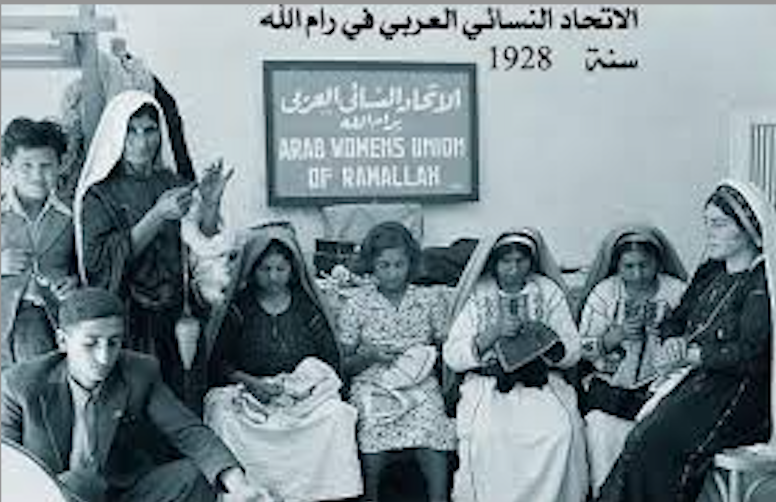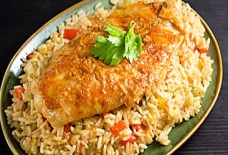Palestinian Women’s Activism During the British Mandate

By: Monica Haddad / Arab America Contributing Writer
By the end of World War I, the Ottoman Empire fell and the British took control of Palestine in a time known as the Mandate period. Due to the tumultuous political climate of this time with the emergence of the Zionist movement leading to an influx of Jewish immigration in Palestine as well as opposition to the current British occupation, there was a rise in Palestinian Nationalism that was instilled in the people. What history often forgets is that Palestinian women were at the frontlines of many of the political discussions during this time, participating in demonstrations, protests, and forming organizations and movements as forms of resistance and activism.
Activism
The Palestinian-Arab Revolt was an uprising against British rule in Palestine, driven by a desire for their independence and opposition to the influx of Jewish immigration. The revolt began in April 1936 and continued until October of that same year, starting with a strike. Women played a crucial role in this protest which was well documented by Palestinian news outlets such as the daily Filastin and Al-Difa.
Historian Subhi Biyadseh recounted being told by the villagers in Baqa al-Gharbiyeh in 1936 that when the British took all of the men in the village and held them as prisoners, the women fought back. The women, along with their children, came to the British barracks and fought with rocks until the men were ultimately freed. This story of resistance shows a significant role Palestinian women played in both peaceful protests and active resistance, defying the stereotype of women as passive in the face of an imperial superpower like the British.
In July 1936, Palestinian woman Fayiz B. Haddad sent an appeal to the High Commissioner later published in the Palestinian daily paper, Filastin. Her request read, “The Arab woman has already gone down to the battlefield, and she does not regret it…The Arab woman, who has seen the men and sons of her nation oppressed and shamed, in hell, a dark future awaiting them, is no longer capable of staying at home.”1 Haddad’s appeal marked a turning point in women’s political activism as she called for women to step away from the confinement of the private sphere and to join in the fight for self-determination.
Movements
The emergence of feminist and nationalist movements in Palestine forever altered traditional views of women’s roles and significantly impacted Palestinian culture. Women emerged not only as activists alongside men but also as founders of pivotal organizations that reshaped their societal roles.
The 1929 Western Wall incident, driven by increased Jewish immigration and land ownership heightened Arab-Jewish tensions and sparked the creation of many female-organized movements such as the The Arab Women’s Association of Palestine (AWA). The AWA emerged in Jerusalem following the Palestine Arab Women’s congress on October 26, 1929. Co-founder Matiel Mogannam articulated the AWA’s goals were to “work for the development of the social and economic affairs of the Arab women in Palestine, to endeavor to secure the extension of educational facilities for girls, [and] to use every possible and lawful means to elevate the standing of women”.2 The AWA engaged in written advocacy, seeking support from other women’s organizations across the Arab world and highlighting issues such as women’s education and the plight of political prisoners.3 The group expanded its reach to other cities like Jaffa, Haifa, and Gaza and participated in the nationalist boycott of foreign goods and raised funds for nationalist causes.4
In 1938, the unified AWA split into the “Arab Women’s Association” and the “Arab Women’s Union”. The AWA continued its social activism while the Arab Women’s Union became more focused on feminist issues, strongly advocating for women’s education, career development, and equity. The Union expanded its reach into other aspects of public life and culture including supporting the arts and building infrastructure for sports.5
Another prominent women’s group during the mandate was Zahrat al-Uqhawan (Chrysanthemum Flowers), founded in 1933 by highschool teacher Moheba Khorsheed and her sister Arabiya. The organization was a fundraising effort to donate to displaced families in Jaffa, as well as donating food and supplies to those resisting. Khorsheed used her role to educate and inspire women, promoting religious tolerance and women’s public engagement.6
During the Mandate Period, increased education and political strife propelled Palestinian women into significant roles within nationalist movements, leading to activism and the founding of political organizations. Although overlooked by history, their role was integral to advancing political discourse. Palestinian women excelled as educators, activists, and leaders making an undeniable mark on the nationalism movement of the late Mandate Period. In a period of tension and political unrest, the women of Palestine were able to unify and grow, emerging from tumultuous conditions as a beacon for positive social change.
Sources:
1. Filastin, 29, July 1936. (Filastin as a Case Study by Mustafa Kabha).
2. Mogannam, Matiel. The Arab Woman and the Palestine Problem.(Hyperion Press, 1937), 77.
3. Kawar, Amal. Daughters of Palestine: Leading Women of the Palestinian National Movement (State Univeristy of New York Press, 1996), 5.
4. Fleischmann, Ellen. The Emergence of the Palestinian Women’s Movement (Journal of Palestine Studies, 2000), 19.
5. “About Us”, The Arab Women’s Union in Jerusalem. http://www.awu-jer.org/en/aboutus.shtml.
6. Alsaafin, Linah. Radical Lives: Moheba Khorsheed. November 24, 2014.
Check out our blog here.








